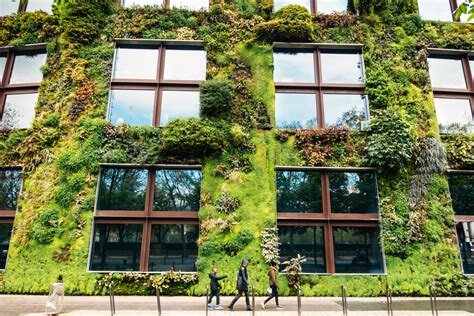
Biophilic Design
The buildings we teach in hold more than our embodied carbon footprint. They are also “crystallized pedagogy.” If we teach students in classrooms and buildings that are disconnected from the earth, they will think their education has no relationship to the earth.
Students are taught in subtle ways beyond the content of the course. Buildings and classrooms, for example, have their own hidden curriculum that teaches as effectively as any course taught in them.
Traditional classrooms are designed and arranged to limit student interaction and to empower the teacher by placing them at the front of the room. Students sit isolated from one another in rows of desks facing forward. Classrooms are also cut off from one another. A student cannot look to their left and see what another class is doing, learning happens in silos determined by subject. The classroom itself teaches students to be passive observers of content. This leads students to wonder how the material they’re learning connects to the “real world.”
Many climateers assert that we cannot mitigate or adapt to the climate crisis unless we have a more intimate relationship with the earth. Dahr Jamail puts it this way in The End of Ice, “But I have come to realize that only by sharing an intimacy with these places can we begin to know, perhaps, love, and certainly care for them. Only by having this intimacy with the natural world can we fully understand how dramatically our actions are impacting it.” Biophilic design can help us regain an intimate relationship with the planet. Biophilic design is the practice of connecting people and nature in our built environments and communities. Trees surround the building and even grow from the building. Streams flow through the middle of a classroom. Plants stretch the length of walls. Instead of concrete, buildings are made of wood. The Living Future Institute encourages us to reimagine how we think about the built environment. Instead of constructing buildings that deplete resources and disconnect us from the earth, we should think of buildings as a living organism that requires its occupants to be stewards of it.
To meet the goals of The Paris Agreement, Christiana Figueres and Tom Rivett-Carnac, two of the authors of the Agreement, encourage us to “go outside and look around. The world is damaged and hurting, but it is also beautiful and intact and whole. Pay attention to something you have forgotten -- emerging leaves in the spring or frost on dead leaves in winter. Feel the gratitude we owe the Earth for her bounty and beauty.” In biophilic design, there is much less distinction between inside and outside. Nature is embedded and woven into the architecture of the building.
The building itself becomes a teaching tool and provides opportunities for students and teachers to learn by engaging with nature. It enables students to perceive the interconnectedness of the earth and human intelligence. It promotes justice by creating access to green spaces, which can bridge the green divide and combat nature deficit disorder. And it can help us reclaim our intimacy with the earth.
E.O. Wilson coined the term “biophilia.” He defines it as “the innate tendency to focus on life and lifelike processes.” In other words, biophilia is our hardwired affinity for nature. Loving earth is encoded in our DNA. We may forget our love for the earth if we are disconnected from it. But Wislon reminds us that loving the earth also means loving ourselves: “To the degree that we come to understand other organisms, we will place a greater value on them, and on ourselves.”

